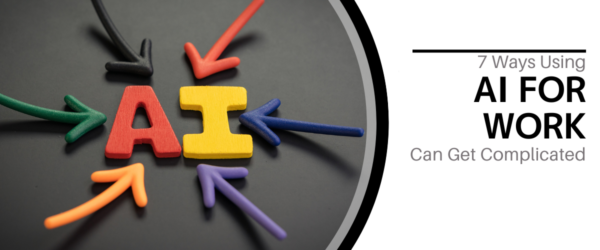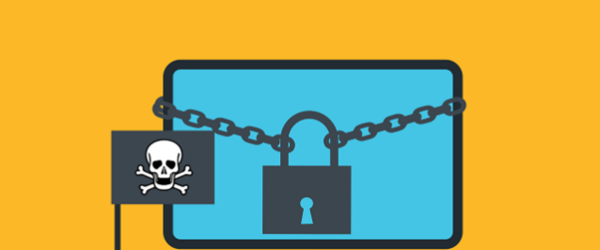Businesses rely heavily on their computer systems to efficiently carry out day-to-day operations. However, it is not uncommon for companies to cling onto outdated systems that have long surpassed their prime.
While these legacy systems may still manage to perform basic functions, they pose a significant risk – frequent system downtime.
Below, we delve into the correlation between outdated systems and downtime, highlighting the potential consequences of neglecting technological upgrades and emphasizing the importance of keeping up with ever-evolving digital landscapes for optimal business performance.
Legacy Systems: A Risky Proposition
Legacy systems, referring to outdated computer systems, can pose a risky proposition for businesses. As technology continues to advance at a rapid pace, relying on legacy systems that have surpassed their prime can hinder efficiency and productivity. One of the main risks associated with these outdated systems is frequent downtime.
These legacy systems may still be able to perform basic functions, but their reliability and stability become compromised over time.
When these systems experience downtime, it results in lost productivity and revenue for businesses. The longer the system remains offline, the greater the impact on operations. This interruption in workflow can also lead to frustrated customers or clients who rely on timely deliverables or services from the company.
Neglecting technological upgrades means missing out on new features and improvements that are now available in modern computer systems. It puts companies at a disadvantage compared to competitors who have embraced newer technological solutions. Therefore, it is crucial for businesses to prioritize keeping up with ever-evolving technology trends by updating their outdated systems regularly.
Clinging onto outdated legacy systems poses significant risks for businesses in terms of frequent system downtime. This not only affects efficiency and productivity but also impacts customer satisfaction and revenue generation capabilities.
To stay competitive today, organizations must recognize the correlation between neglected technological upgrades and potential consequences while prioritizing regular updates to stay ahead of advancing industry standards.
The High Cost of Downtime
Outdated systems play a significant role in contributing to this costly issue. As technology advances at an unprecedented rate, businesses that fail to keep up with upgrades and modernization are left vulnerable to system failures and disruptions.
Not only do outdated systems lack the necessary features and capabilities required by modern businesses, but they also pose security risks. Older systems often have vulnerabilities that hackers exploit easily, leading to data breaches and potential financial losses. The costs associated with resolving such security incidents can be astronomical – from restoring compromised data to addressing reputational damage.
It is crucial for organizations to understand the correlation between outdated systems and downtime in order to prioritize technology updates.
Failing to invest in updating IT infrastructure may save money initially but will result in higher costs in the long run due to frequent system crashes and unexpected outages. By embracing technological advancements proactively, businesses can prevent costly downtime while ensuring efficient operations that meet customer demands effectively.
Upgrading for Reliability
In order to ensure reliability and minimize the risk of system downtime, businesses must prioritize upgrading their outdated systems. Outdated technology is more susceptible to failures and breakdowns, leading to frequent periods of unavailability. These instances of downtime can have severe consequences for a company’s productivity, customer satisfaction, and overall reputation.
Upgrading involves investing in modern infrastructure that is better equipped to handle the demands of today’s business environment. This could include upgrading hardware components such as servers or network equipment, as well as adopting new software solutions that are more efficient and secure. By staying up-to-date with technological advancements, businesses can proactively address vulnerabilities and potential issues before they cause significant disruptions.
Regular system upgrades also provide organizations with access to additional features and functionalities that may enhance operational efficiency or offer competitive advantages. Upgraded systems often come with improved security measures to protect against evolving cyber threats.
Embracing these advancements not only reduces the risk of downtime but also ensures that companies remain at the forefront of innovation in their respective industries.
The Connection Between Systems and Productivity
The connection between systems and productivity is undeniable. Outdated systems can significantly hinder a company’s efficiency and overall productivity.
These systems often lack the capabilities needed to keep up with modern demands, leading to frequent system downtime that disrupts workflow and creates bottlenecks in processes.
When outdated systems experience downtime or technical issues, employees are unable to access critical information or complete their tasks, resulting in wasted time and reduced productivity. Manual workarounds may be needed to compensate for these limitations, further contributing to inefficiency. This not only hampers employee morale but also impacts customer service and satisfaction.
To maintain optimal productivity levels, it is crucial for businesses to regularly assess their systems’ performance and invest in technological upgrades when necessary.
Upgrading outdated systems can enhance speed, security, functionality, and integration potential – all of which directly impact productivity. With faster processing capabilities and seamless integration between software applications, employees can perform tasks more efficiently and focus on value-added activities rather than dealing with system-related issues or downtime occurrences.
Managed IT in Wilmington: Stepping into the Future
The correlation between outdated systems and downtime is undeniable. As businesses become increasingly reliant on technology, it is crucial to acknowledge the impact that outdated systems can have on efficiency and productivity. By neglecting outsourced IT in Wilmington, technological upgrades and clinging onto legacy systems, companies run the risk of experiencing frequent system downtime, which can lead to significant financial losses and damage to their reputation.
It is clear that staying up-to-date with ever-evolving technology is a necessary step for businesses looking to thrive in today’s fast-paced world.
Investing in modern computer systems and software not only improves operational efficiency but also minimizes the risk of system failures and downtime. Companies must prioritize regular updates, maintenance, training and General IT Support to ensure that their IT infrastructure, including reliable IT Support, remains secure and reliable.
Stepping into the future means leaving behind antiquated systems that are no longer able to meet the demands of a digital age.
It requires embracing new technologies, adapting to changing trends, and making strategic investments in order to stay ahead of competitors. By doing so, businesses can position themselves for success by leveraging cutting-edge tools that enhance performance while minimizing potential disruptions caused by system downtime.





